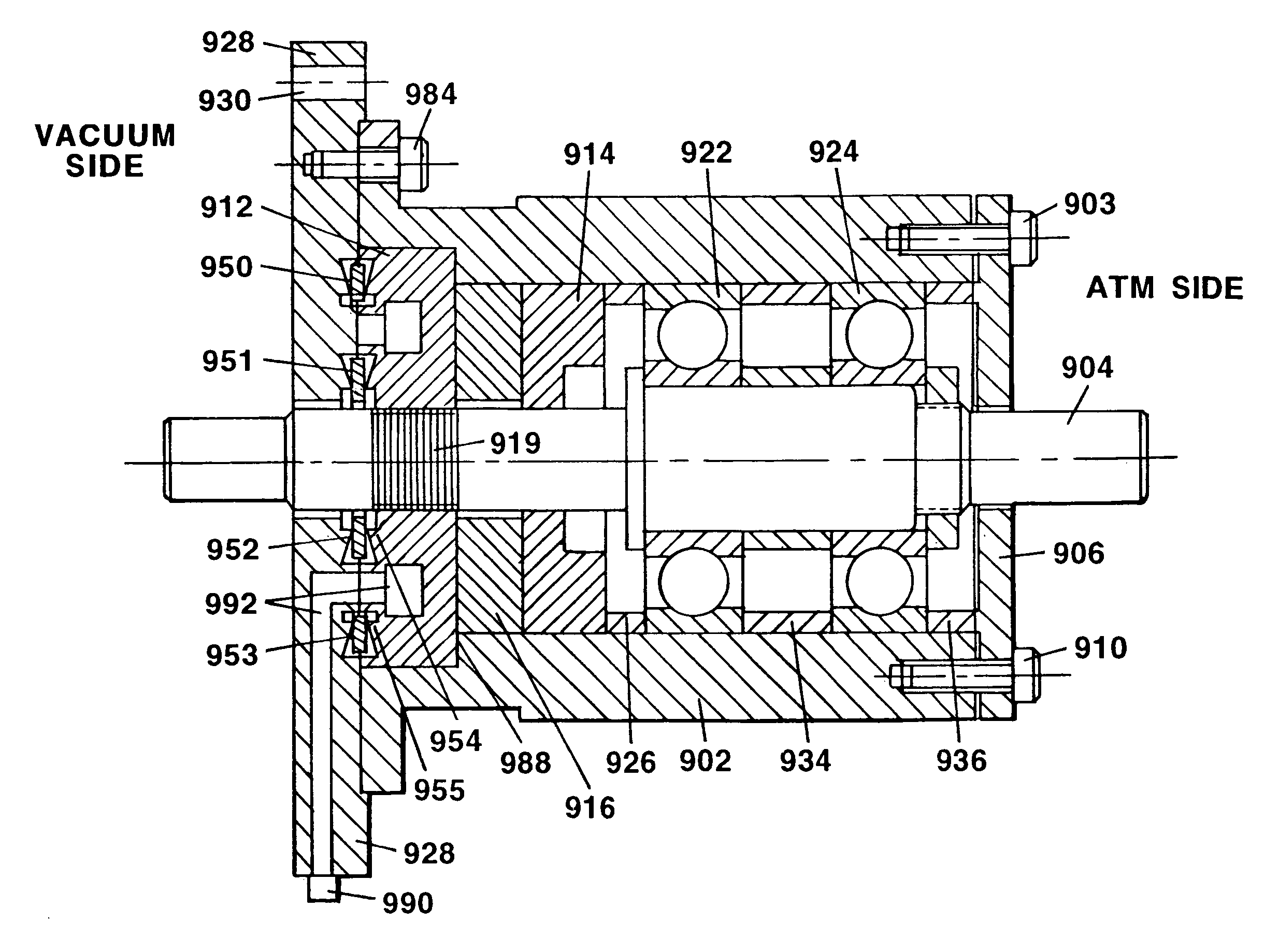Ultra high vacuum ferrofluidic seals and method of manufacture
a high-vacuum, ferrofluidic technology, applied in the field of ferrofluidic seals, can solve the problems of difficult manufacturing, assembly, maintenance of seals, and inability to survive the high-temperature baking procedure commonly used
- Summary
- Abstract
- Description
- Claims
- Application Information
AI Technical Summary
Benefits of technology
Problems solved by technology
Method used
Image
Examples
Embodiment Construction
In one embodiment, a metal seal comprised of two knife-edges and a flat metal washer is formed between the outer pole piece 212 and the housing 202 at the axial interface 256 as shown in FIG. 2. In FIG. 2, elements that correspond with similar elements in FIG. 1 have been given corresponding numeral designations. For example, housing 102 in FIG. 1 corresponds to housing 202 in FIG. 2. One knife edge 252 is machined into the inner face 258 of the integral housing flange 228 and the other circular knife edge 254 is machined into the opposing face of the outer pole piece 212. In one embodiment, the knife edges 252 and 254 are circular with the same diameter. The knife edges 252 and 254 could also have other configurations as long as they have a closed circumference. A metal flat washer 250, typically made of copper, is placed in between the two knife-edges 252 and 254. The force generated by tightening the clamping screws of which two 203 and 210 are shown that mount the end cap 206 to...
PUM
 Login to View More
Login to View More Abstract
Description
Claims
Application Information
 Login to View More
Login to View More - R&D
- Intellectual Property
- Life Sciences
- Materials
- Tech Scout
- Unparalleled Data Quality
- Higher Quality Content
- 60% Fewer Hallucinations
Browse by: Latest US Patents, China's latest patents, Technical Efficacy Thesaurus, Application Domain, Technology Topic, Popular Technical Reports.
© 2025 PatSnap. All rights reserved.Legal|Privacy policy|Modern Slavery Act Transparency Statement|Sitemap|About US| Contact US: help@patsnap.com



